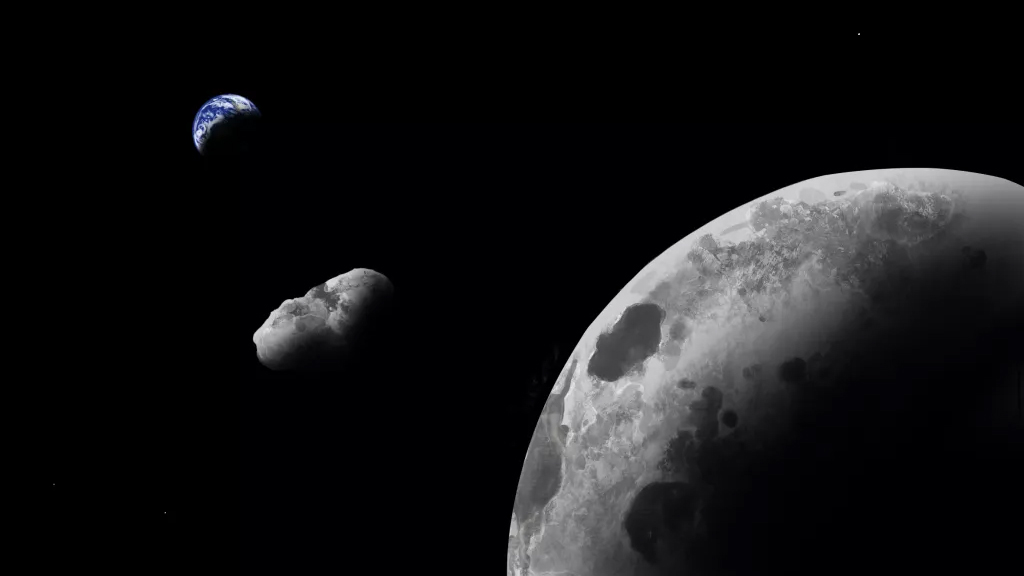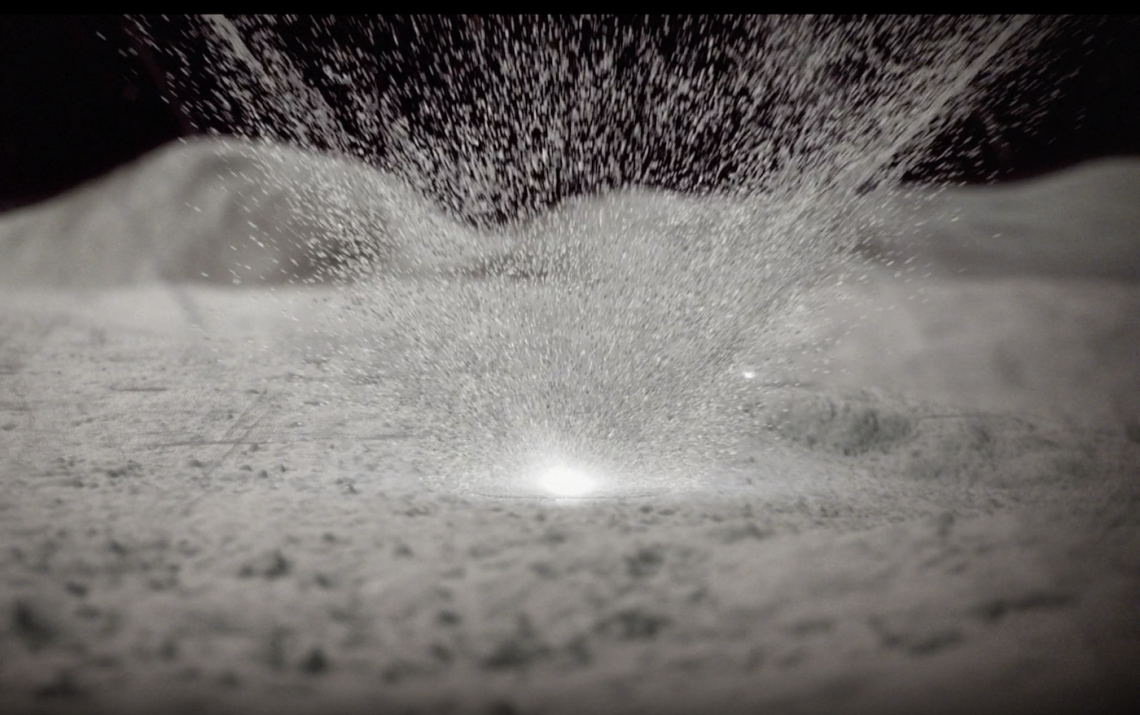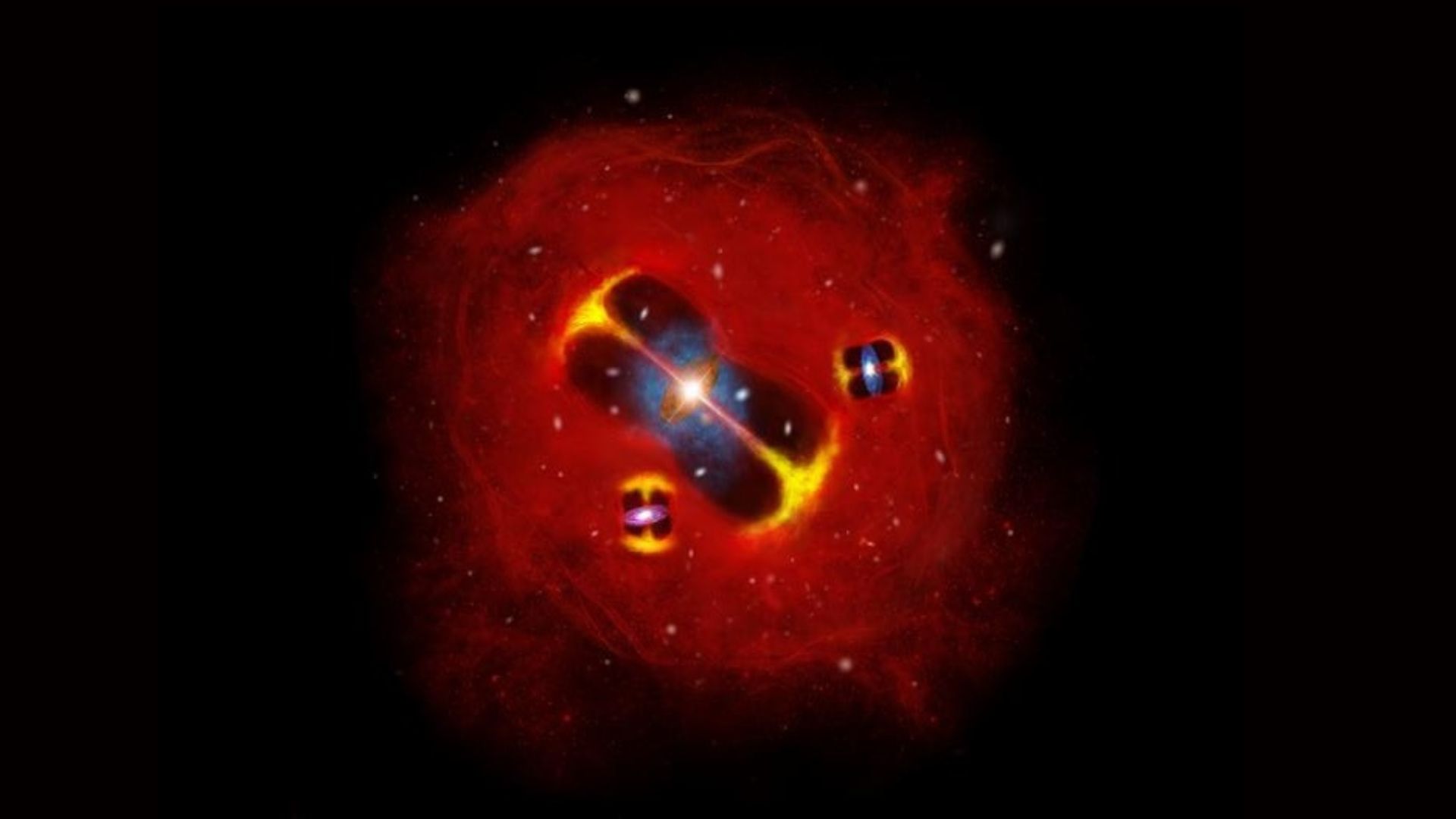A chunk of the moon appears to be orbiting near Earth, new study suggests
The asteroid Kamo'oalewa may have been ejected by a massive impact on Earth's moon, a new simulation has revealed.

Astronomers have found more evidence that a near-Earth asteroid is an ejected chunk of the moon.
The asteroid Kamo'oalewa — a Hawaiian name that means "the oscillating fragment" — is a Ferris-wheel-size rock chunk that orbits within 9 million miles (14.4 million kilometers) of Earth every April.
Since the object's discovery in 2016, scientists have puzzled over the strange rock's origins, and they were surprised when a 2021 analysis revealed that Kamo'oalewa's composition is similar to the moon's.
Related: New 'quasi-moon' discovered near Earth has been traveling alongside our planet since 100 BC
Now, a new study, published Oct. 23 in the journal Communications Earth & Environment, describes a feasible way that an ancient asteroid impact could have shunted the space rock onto its current trajectory and suggests there could be more moon chunks floating around the solar system.
"We are now establishing that the moon is a more likely source of Kamo'oalewa," lead author Renu Malhotra, a planetary scientist at the University of Arizona, said in a statement.
Two unusual orbital properties drew astronomers to investigate Kamo'oalewa. First, as a "quasi-satellite" of Earth, it is so close to our planet that it appears to orbit it, even though its actual orbital partner is the sun. Second, the asteroid is projected to stick closely by Earth's side for millions of years, whereas many near-Earth objects hang around for only decades.
Get the world’s most fascinating discoveries delivered straight to your inbox.
These anomalies led the astronomers to conduct an analysis of the asteroid's spectra in 2021. They found that the light emitted and absorbed by Kamo'oalewa indicated that the asteroid was likely made of moon rock.
"We looked at Kamo'oalewa's spectrum only because it was in an unusual orbit," Malhotra said. "If it had been a typical near-Earth asteroid, no one would have thought to find its spectrum and we wouldn't have known Kamo'oalewa could be a lunar fragment."
By simulating asteroid impacts on the moon and the gravitational forces that ejected chunks would be subjected to, the researchers found a small possibility that some of the rocks would end up in near-Earth orbits. Prior to the calculations, astronomers expected most launched lunar material to either land back on the moon or rain down on Earth — not end up in a distant orbit around the sun.
The researchers said their findings could give them a better understanding of hazardous near-Earth asteroids. Their next steps will be to figure out the conditions that could have pushed the rock into its orbit and to find out exactly when the impact took place.

Ben Turner is a U.K. based writer and editor at Live Science. He covers physics and astronomy, tech and climate change. He graduated from University College London with a degree in particle physics before training as a journalist. When he's not writing, Ben enjoys reading literature, playing the guitar and embarrassing himself with chess.



